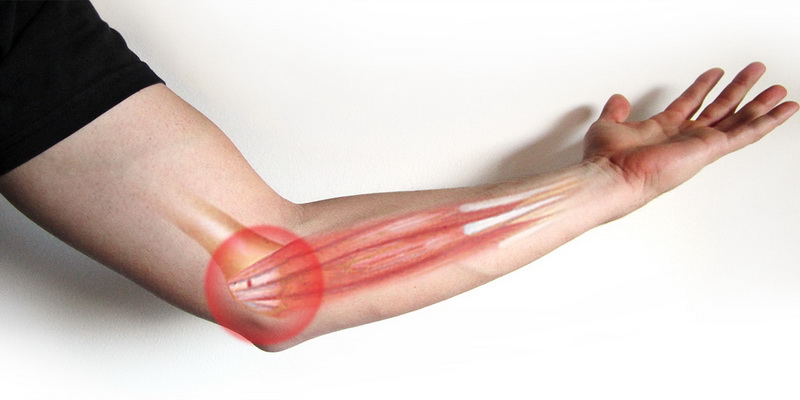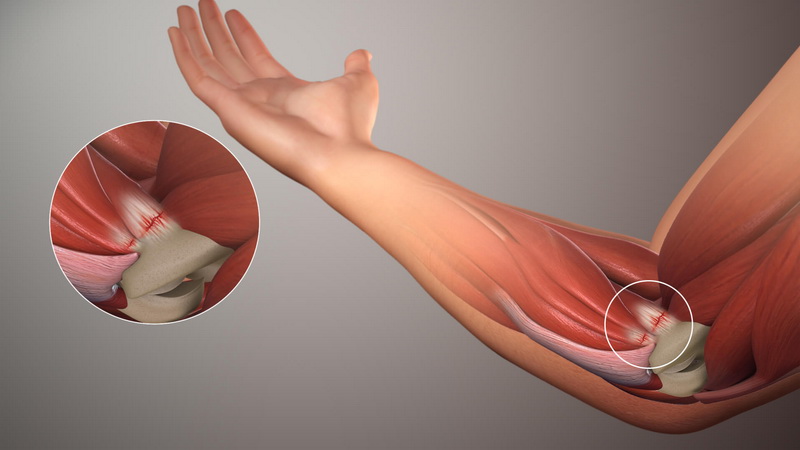Are you dealing with elbow pain after the game of golf? Golfers elbow, medically known as medial epicondylitis, is a condition that causes pain and inflammation where the tendons of your forearm muscles attach to the upper arm bone inside your elbow. If you’re struggling with this discomfort, as with any overuse injury, it is crucial to get treatment quickly. So, what is the best treatment for golfers elbow?

Considering that golfers elbow is caused by overuse or general wear and tear of tendons, muscles, and bones, the treatment is usually straightforward. Needless to say, treatment for medial epicondylitis begins with avoiding whatever activity that causes pain.
In this article, you will learn more about golfers elbow. Also, you will discover tips on how to cure golfers elbow quickly. Read on!
What is golfers elbow?
Golfers elbow – medial epicondylitis – is a less than pleasant condition marked by pain and inflammation of the tendons connecting the forearm to the elbow. Essentially, it is an inflammation of the tendons that attach the forearm muscles to the bone on the inside of your elbow.
While this condition is common in enthusiastic golfers, it can be caused by any activity that requires repetitive gripping motions, including lifting, throwing, rock climbing, weight training, and butting with a racquet. The tiny tears resulting from repeated stress from these activities cause pain, inflammation, and weakness in the elbow.

Notably, golfers elbow affects the muscles that control grasping and wrist flexion. That said, it should not be confused with the tennis elbow, which usually affects the tendon on the outside of the elbow.
So, you are more likely to experience medial epicondylitis if you’re over 40 and actively engage in activities that require forceful, repetitive movement of your arm.
Symptoms of golfer’s elbow
Before telling you what is the best treatment for golfers elbow, it is good that you know the symptoms that are indicative of golfers elbow. So, what are the typical symptoms of medial epicondylitis?
- Pain and tenderness near the funny bone or on the inside of your elbow. Sometimes the pain may extend along the inner side of your forearm.
- Reduces strength in the grip
- Numbness, burning, and tingling in the fingers, especially the ring and little fingers.
- Bothering pain that gradually gets worse.
- Pain that worsens when you do repetitive activities.

Diagnosing golfer’s elbow
Golfers elbow is not the hardest to diagnose. Orthopaedic specialists usually evaluate your symptoms. They examine the forearm and elbow and rule out after discussing with you daily activities. In activities they including sports, that might have caused the condition. The doctor or health practitioners might apply pressure to your elbow to evaluate pain and stiffness.
Diagnosing golfers elbow might require imaging tests to assess the damage to the tissues. In most cases, an X-ray will help in ruling out. However, if your case is extreme, doctors may advise for comprehensive imaging tests like MRI, CT scan, or musculoskeletal ultrasound.
After diagnosis, an orthopaedic specialist will create an individualized treatment ideal for your unique needs aimed for the best possible outcome.
Golfers elbow treatment: What is the best treatment for golfers elbow?

Golfers elbow treatment begins with avoiding the repetitive activity that causes pain. That said, according to experts, the best way to treat medial epicondylitis is by applying ice packs to your elbow for 15 to 20 minutes at a time, 3-4 times a day for several days. When using ice therapy, always use a barrier between your skin and the ice to protect your skin. You can also wrap the ice part itself with a thin towel.
Heat therapy might give people with chronic and recurring pain better, but you should consult your doctor before substituting ice therapy with heat therapy.
So, if you’re experiencing acute pain, there are other treatment options that might help relieve the pain. Besides relieving pain, these approaches can also be used along with ice therapy as they augment the recovery process.
Here are the best cure for golfers elbow options that you may want to try.
Now you will know, what is the fastest way to cure golfers elbow.
- Rest: If repetitive activities cause tendon injuries, it is a no-brainer that taking a break from the actions that aggravate your pain will lessen the effects of the injury. If you are an enthusiastic golfer, you will need to put your golf game on hold until the pain is gone. Remember, returning to repetitive activities too soon can worsen the condition.
- Stretching and strengthening the affected elbow: Exercising and stretching the muscles in the affected elbow can help prevent or heal golfers elbow. Of course, progressively loading the tendons with specific strength training exercises has effectively relieved pain. Depending on your unique needs, your doctor might recommend simple personalized exercises and movements that help build muscle while relieving pain. In most cases, physiotherapists recommend exercises like ball sequences, forearm pronation and supination, finger extensions, and wrist extensions.
- Sports massage: There are high odds that golfers elbow will leave you with scar tissue on the tendons. If you have experienced medial epicondylitis for some time, sports massage can reduce muscle tension and augment the healing process.
- Over-the-counter pain relievers: Tendon injuries can respond to nonsteroidal anti-inflammatory drugs (NSAIDs) and injections. Both have been shown to reduce inflammation in ongoing symptoms and stimulate healing. The downside of these types of medication is that they do not have long-term benefits.
- Use a brace: Pain due to golfers elbow can be severe and irritating. Utilizing a compression brace’s support and other treatment options can help ease the strain and ultimately stimulate healing.
Even pains persist, make sure to speak with your doctor to discuss additional treatment options or possibly further diagnosis.
Conclusion
One of the common questions among people experiencing medial epicondylitis is, “what is the best treatment for golfers elbow?” The good news is that treating golfers elbow is pretty straightforward, and the chances of full recovery are excellent. You will need to put the problematic activity on hold or possibly abstain from it along with the treatment options. Apply ice to the injured elbow, make stretching your priority, and follow any other recommendation by your doctor. If pain persists, don’t hesitate to talk to your doctor.